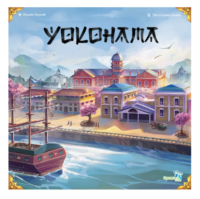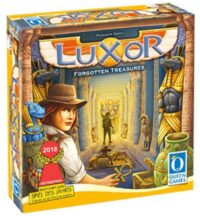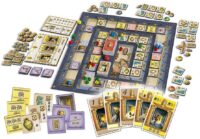Altiplano, a bag-building game along the lines of Orléans set in the South American highlands of the Andes — the Altiplano — is not a simple game, presenting players with new challenges time and again. There are various ways to reach the goal, so the game remains appealing to try out new options and strategies, but success or failure also depends on whether your opponents let you do as you like or thwart the strategy you are pursuing. The competition for the individual types of goods is considerable — as is the fun in snatching a coveted extension card from under another player’s nose!
Each player starts with a unique role tile, giving them access to different goods and methods of production. Players have limited access to production at the start, but they can acquire additional production sites throughout the game that give new options. The numerous goods — such as fish, alpaca, cacao, silver or corn — all have their own characteristics and places where they can be used. For example, while silver can be sold for a high price at the market, fish can be exchanged for other goods at the harbor and alpaca can produce wool that can then be made into cloth at the farm.
Aside from building up an effective production, players must fulfill their orders at the right time, develop the road in good time and store their goods cleverly enough to fill their warehouses in the most valuable way. Often, a good warehouse keeper is more relevant in the end than the best producer.
- 2018 International Gamers Award – General Strategy: Multi-player Nominee
- 2018 Cardboard Republic Architect Laurel Nominee
- 2017 Meeples’ Choice Nominee

 Catan
Catan 










